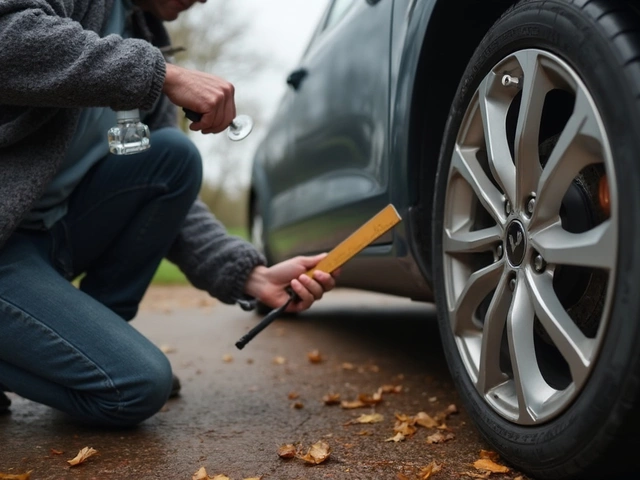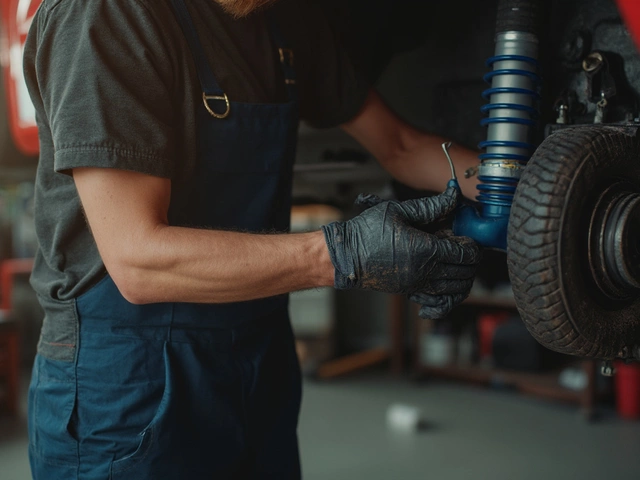Ever thought about changing your own spark plugs? It's one of those car maintenance tasks that sounds intimidating but is really quite doable. If you're willing to get your hands a bit dirty, you might end up saving a chunk of change and learn a thing or two about your vehicle.
Before you dive in, it's essential to have the right tools on hand. A spark plug socket, ratchet, and some anti-seize lubricant are must-haves. Bonus tip: if you haven't changed your plugs in a while, a can of compressed air can be your best friend to keep dirt out of the engine.
Replacing spark plugs might sound daunting, but once you know the steps, you'll see it's pretty straightforward. Plus, those little pieces are crucial—they ignite the air-fuel mixture that powers your car. So, keeping them fresh makes a big difference in your engine's performance.
- Understanding Spark Plugs
- Tools and Materials Needed
- Step-by-Step Spark Plug Replacement
- Tips and Troubleshooting
Understanding Spark Plugs
Spark plugs may be small, but they play a huge role in your car's engine. They are responsible for igniting the air-fuel mixture in your engine's cylinders, which is what keeps your car moving. Without them, well, you'd be going nowhere fast.
Every spark plug has a center electrode and a ground electrode. When your engine runs, the electrical current from your car's ignition system jumps across these electrodes, creating the spark that ignites the fuel. Pretty cool, right? Plus, they help control emissions by ensuring the air-fuel mix burns completely.
How Often Should You Replace Spark Plugs?
Most car manufacturers recommend changing spark plugs every 30,000 miles or so. But this can vary based on your car and the type of spark plugs you're using. Modern iridium plugs last longer than older copper ones.
Keeping track of your mileage between spark plug changes can prevent engine misfires and rough idling. If you've noticed your car's not running as smoothly as it used to, it might be time to check those plugs.
Signs Your Spark Plugs Need Replacing
Wondering if your spark plugs are on their last legs? Watch out for some telltale signs:
- Hard starts or no starts
- Poor acceleration
- Decrease in fuel efficiency
- Engine misfires or rough idling
If any of these sound familiar, it's worth taking a look under the hood.
Different Types of Spark Plugs
Did you know there's more than one type of spark plug? Yep, there's:
- Copper: Cheap but need frequent replacement.
- Platinum: Last longer than copper. Better for most modern cars.
- Iridium: The longest-lasting but pricier.
Choosing the right type for your car is crucial. Refer to your car's manual or ask your auto parts store if you're not sure which type to go for.
Tools and Materials Needed
Tackling a DIY spark plug change? Building your toolkit is the first step. You don't need a mechanic's full set, just some essentials that will make this job a breeze.
Spark Plug Socket
A spark plug socket is specially designed to fit around the plug snugly, usually with a rubber insert to hold it in place. Get this right and everything else gets easier.
Ratchet and Extension
A standard ratchet will do, but having an extension gives you the flexibility to reach those hard-to-get places under the hood. Trust me, a little extra length can save you a lot of hassle.
Gap Gauge
Every spark plug needs to be gapped correctly for your engine. A gap gauge helps you measure and adjust this so your engine fires smoothly. It's a small tool but makes a big difference.
Anti-Seize Lubricant
This is one of the lubricants that can help you during reinstallation. It makes sure your plugs come out smoothly the next time you change them.
Compressed Air and Gloves
Shooting a bit of compressed air into the socket can blow away dust and dirt that could cause issues later. And gloves, while optional, keep your hands clean and safe from scrapes.
Additional Materials
Don't forget to pick up replacement spark plugs. Choose the right type specified in your owner's manual. The right plugs can make your engine purr like a kitten.
| Tool | Purpose |
|---|---|
| Spark Plug Socket | Securely removes plugs |
| Ratchet | Applies necessary torque |
| Gap Gauge | Ensures correct plug spacing |
| Anti-Seize Lubricant | Prevents sticking |
| Compressed Air | Cleans out dirt |

Step-by-Step Spark Plug Replacement
Getting into the nitty-gritty of replacing your spark plugs isn't as scary as it seems. Just think of it as a puzzle where each step brings you closer to a perfectly running engine.
1. Prep Your Workspace
Make sure your car's engine is cool to the touch. Nothing ruins a day like a nasty burn. Gather all your tools and open the hood. A well-lit, clean workspace is half the battle won.
2. Locate the Spark Plugs
Your vehicle might have the spark plugs hidden under some plastic covers. Typically, they're aligned in a row under the ignition coil. Use your car manual as a treasure map if things get confusing.
3. Remove the Ignition Coil
- Carefully disconnect the ignition coil by removing the bolts and unplugging the connector.
- Gently twist and pull up the ignition coil; avoid yanking.
Pro tip: Label the coils if needed, so they go back in the right order.
4. Remove the Old Spark Plug
- Use compressed air to blow away dirt around the plug area to ensure nothing falls inside the engine.
- Place the spark plug socket onto a ratchet and unscrew the plug. Hold the wrench steady and apply pressure gently.
Remember not to force it—a stubborn plug may need a spritz of penetrating oil.
5. Install the New Spark Plug
- Apply a small dab of anti-seize lubricant on the threads of the new plug.
- Screw the new plug in gently by hand first, then tighten it with the ratchet.
Don't overtighten! You want it snug, not smashed.
6. Reattach Everything
- Pop the ignition coil back on, ensuring it clicks into place securely.
- Reattach any covers you removed and double-check your work.
Give it a once over, ensuring all connections are snug and wires haven't wandered.
| Part | Estimated Lifespan |
|---|---|
| Spark Plug | 20,000 to 30,000 miles |
| High End Spark Plug | 50,000 to 100,000 miles |
And just like that, you're done! Replacing your own spark plugs not only gives you a small victory over car maintenance but also keeps your engine purring like a happy cat. Next time your car's due, you'll know exactly what to do.
Tips and Troubleshooting
So, you've decided to replace spark plugs yourself. That's awesome! But it's not always smooth sailing, so here are some tips and solutions for common hiccups.
Common Mistakes to Avoid
First off, make sure you've got the right spark plugs for your car model. A common blunder is using the wrong type, which can lead to all sorts of engine troubles. Check your car's manual or give the dealer a quick call to confirm. Double-checking this little detail can save you a huge headache later.
Struggling with Stuck Plugs
If your current spark plugs are being stubborn, don't panic. They've probably been in there for a while and might just need a little encouragement. Try giving them a squirt of penetrating oil and let it sit for a few minutes. A gentle tap on the ratchet will usually get things moving. Just don't force anything—breaking a plug might mean a costly repair.
Gap Check: Why It Matters
Once you've got your shiny new plugs ready to go, check the gap. The 'gap' is the space between the metal tip and the hook. Too big or too small, and your engine's performance can suffer. Use a gapping tool to adjust if necessary. A quick search should tell you the perfect gap size for your make. It's a tiny detail, but it makes a big difference.
After Installation
Once the new plugs are in, give your car a trial run. If something feels off or there's unexpected noise, double-check your work. In rare instances, a plug might be just shy of tight enough. Pop the hood and give everything another look. It's worth the extra five minutes for peace of mind.
Keep It Routine
Getting into the habit of inspecting your plugs every 30,000 miles or so, depending on your car, keeps your engine running smoothly. Consider penciling in a reminder on your calendar—future you will thank you.






